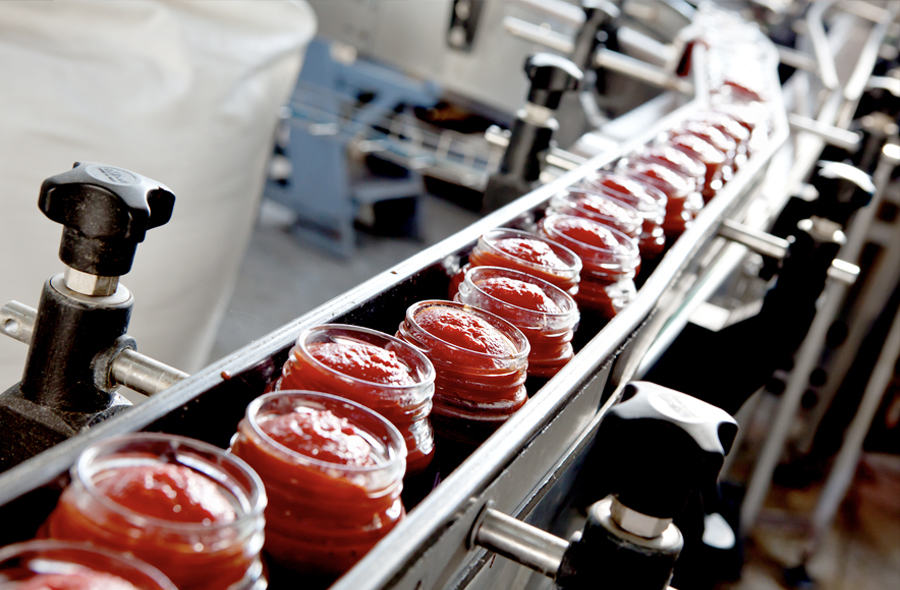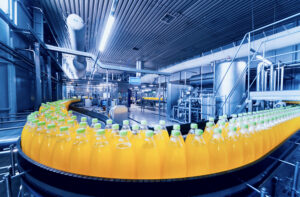Food processors relish easy access to export markets and Moroccan ingredients

International operators in added-value agribusiness benefit both from Morocco’s unbeatable facilitation of exports and its diverse, sustainable agricultural sector.
SHARE THIS ARTICLE:

Agro-processing and agriculture are twin engines of the Moroccan economy, accounting for a combined $6.49 billion in exports last year, 21.1 percent of the country’s total, according to government statistics. In the downstream agribusiness sector, 2,100 companies and a skilled workforce of 160,000 people currently generate 25 percent of Morocco’s industrial gross domestic product (GDP), with $17 billion in annual revenues and $4 billion in yearly added value.
Exporters in that sector benefit from close proximity to major food markets in Europe and Africa, as well as state-of-the art logistics infrastructure, including Tanger Med Port, the largest commercial port in Africa, which ensures short lead times to customers. Another excellent facilitator of exports is Morocco’s broad portfolio of free trade agreements covering over 50 nations across four continents, which includes one with the European Union, and it is the only country in Africa to have a free trade agreement with the U.S.
That easy market access has encouraged international food companies to establish substantial manufacturing and export businesses in Morocco. Among the earliest to enter the country was France’s Bel Group, almost 50 years ago. Today, the creator of the famous Laughing Cow spreadable cheese employs over 1,200 people at three sites in Morocco, one of which is a technologically advanced factory that the group has invested about $95 million in within the last two decades. This factory acts as a global pilot site for Bel’s introduction of industry 4.0 technologies and is currently one to two years ahead of all the group’s other manufacturing plants.
“We’re proud to export Laughing Cow to the U.S. from our high-performing plant in Tangier.”
Cécile Béliot, CEO, Bel Group
The cheeses made there are shipped to around twenty countries, including the U.S. “We’re proud to export Laughing Cow to the U.S. from our high-performing plant in Tangier,” Bel’s CEO Cécile Béliot has said. “We’ve been committed to Morocco since the 1970s and will continue to invest there to consolidate the position of our historic brands.”
Having invested more than $60 million in the country in just the last decade, Nestlé celebrated its 30th anniversary in Morocco this July. Marking the occasion, Nestlé Maroc general business manager, Imane Zaoui, stated: “We’re very proud to be locally producing international brands Nido and Nescafé from fresh milk and green coffee beans at our factory in El Jadida, which caters to our Moroccan consumers and exports 80 percent of its coffee production.” Another success story is the U.S.’s Mondelēz, whose $11-million factory in Casablanca—the firm’s largest Oreo-biscuit production facility in Africa—has been baking 900 million biscuits a year for local consumption and export since 2015. A more recent entrant is the Japanese Mitsui Group, which invested $25 million in Moroccan poultry company Zalar in 2018 and increased its shareholding by $41 million this year to help expand the firm’s international footprint.
These examples illustrate the potential in Moroccan agribusiness, but there are plenty more opportunities to be snapped up by investors and the government has identified fruit and vegetable processing, dairy, pasta and couscous, biscuits, confectionery, chocolate, olive oil and processed meat as areas offering particular promise.
Investors in those areas can take advantage of, not only fluid connections to international markets, but equally easy access to quality raw materials through Morocco’s well-structured agricultural upstream as well. Nestlé, for example, sources over 60,000 tons of milk a year from more than 6,000 small farms in a rural region lying just an hour from its factory.
Representing almost 15 percent of Morocco’s GDP and employing about 45 percent of its workforce, the country’s agricultural sector is diverse, thanks to a variety of climates and terrains that support livestock, plus over 5,000 species of fruits, vegetables, grains, aromatic and medicinal plants, along with other crops.
Since 2008, when the government initiated an ambitious development strategy—the Green Morocco Plan—the agricultural sector has been significantly modernized. According to the Moroccan Agency for Agricultural Development, there was a 5.25 percent yearly increase in agricultural gross product between 2008 and 2018, a decade in which agricultural exports also jumped by 117 percent from $1.4 billion to $3.2 billion.
In 2020, the government launched a new 10-year strategy to consolidate and continue the sector’s transformation: Green Generation. The plan is founded on two pillars, the first involves empowering young farmers and entrepreneurs by, for instance, providing training in high-tech agricultural techniques to 150,000 people. The second is making the sector more eco-friendly, smart and resilient. 12,000 hectares of land were dedicated to organic farming in 2020, with the country exporting the harvested produce to Europe, the U.S. and Canada. Having introduced attractive incentives for organic farming, the government wants 100,000 hectares to be certified by 2030, with those soils producing 900,000 metric tons of crops, two-thirds of them for export.
To make the sector smarter, at least 2 million farmers are being connected to innovative digital agricultural platforms, while resilience is being addressed in a number of ways. Morocco is already the only country in its region to practice soil-conservation agricultural techniques at scale and the government is further supporting the sector against the challenges of climate change by expanding irrigation capacity, introducing new irrigation technologies and building seawater desalination plants. For example, in 2020, King Mohammed VI launched a $360-million public-private desalination project in the Chtouka region that supplies around 1,500 farms with clean water.
Overall, the Green Generation plan’s goals include agricultural exports rising to $6.4 billion and for the sustainable development of Morocco’s agricultural sector to create many more opportunities for added-value agribusiness manufacturing and exporting.

